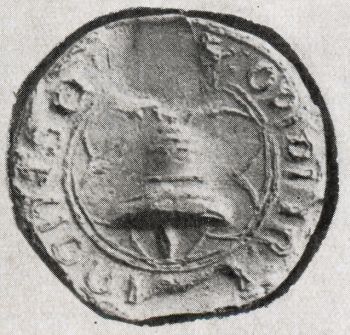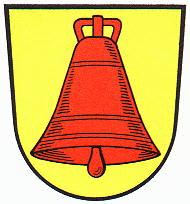Lüdinghausen
| Heraldry of the World Civic heraldry of Germany - Deutsche Wappen (Gemeindewappen/Kreiswappen) |
LÜDINGHAUSEN
State : Nordrhein-Westfalen
District (Kreis) : Coesfeld (until 1974 Lüdinghausen)
Additions : 1969 Lüdinghausen-Land; 1975 Seppenrade
Official blazon
- (1909) In Gold eine rote Glocke.
- (1975) In Gold eine rote Glocke, links oben begleitet von einem roten Ammoniten.
Origin/meaning
The present arms were granted in 1982 and combine the bell from th eprevious arms (see below) with the ammonite taken from the arms of Seppenrade.
The bell is a canting symbol, in the North-German dialect lüden is to sound a bell. The name of the city, however, has nothing to do with lüden or bells.
There are a few other stories for the origin of the bell. One is the story that when the corpse of St. Liudgerus in the 10th century arrived in Lüdinghausen, the local church bells started to sound on their own accord.
Lüdinghausen was founded in the 13th century and received city rights around 1308. The oldest existing seal dates from the end of the 14th century and shows already the bell. The bell also appeared on the seal of the 13th century Knights of Lüdinghausen. All later seals showed the same composition.
In the 18th century a helmet with a bell between wings was used as a crest. On December 8, 1909 the arms were officially granted, without the helmet but with a mural crown, which was used until the merger with Seppenrade in 1975.
| The seal from 1406 |
The arms from 1909 |
| The arms in the Kaffee Hag albums +/- 1925 |
Literature : Stadler, 1964-1971, 8 volumes; Leaflet: Die Wappen im Kreis Coesfeld, provided by Kreis Coesfeld, 1999; Meijer, 1940




